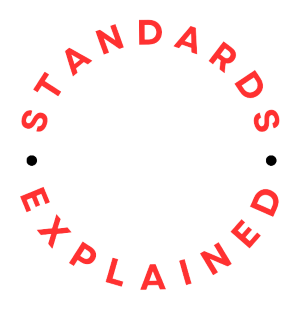ISO 45003:2021 Occupational health and safety management — Psychological health and safety at work — Guidelines for managing psychosocial risks provides guidelines for managing psychosocial risk within an occupational health and safety (OH&S) management system based on ISO 45001. It enables organizations to prevent work-related injury and ill health of their workers and to promote well-being at work.
The standard is applicable to organizations of all sizes and in all sectors, for the development, implementation, maintenance and continual improvement of healthy and safe workplaces.
What does it cover?
| Introduction |
| 1 Scope |
| 2 Normative references |
| 3 Terms and definitions |
| 4 Context of the organization |
| 4.1 Understanding the organization and its context |
| 4.2 Understanding the needs and expectations of workers and other interested parties |
| 4.3 Determining the scope of the OH&S management system |
| 4.4 OH&S management system |
| 5 Leadership and worker participation |
| 5.1 Leadership and commitment |
| 5.2 OH&S policy |
| 5.3 Organizational roles, responsibilities and authorities |
| 5.4 Consultation and participation of workers |
| 6 Planning |
| 6.1 Actions to address risks and opportunities |
| 6.2 Objectives to address psychosocial risk |
| 7 Support |
| 7.1 Resources |
| 7.2 Competence |
| 7.3 Awareness |
| 7.4 Communication |
| 7.5 Documented information |
| 8 Operation |
| 8.1 Operational planning and control |
| 8.2 Emergency preparedness and response |
| 8.3 Rehabilitation and return to work |
| 9 Performance evaluation |
| 9.1 Monitoring, measurement, analysis and performance evaluation |
| 9.2 Internal audit |
| 9.3 Management review |
| 10 Improvement |
| 10.1 General |
| 10.2 Incident, nonconformity and corrective action |
| 10.3 Continual improvement |
Applying ISO 45003
Applying the guidance in ISO 45003 for managing psychological health and safety at work involves several key steps.
Understanding ISO 45003
Familiarize yourself with the requirements and guidelines outlined in ISO 45003, which provides guidance on managing psychological health and safety in the workplace.
Leadership Commitment
Secure commitment from top management to prioritize psychological health and safety within the organization. This involves establishing policies, objectives, and a framework for managing psychological health and safety.
Context and Stakeholder Analysis
Identify internal and external factors that may impact psychological health and safety, as well as stakeholders who should be involved in the process.
Risk Assessment
Conduct a thorough assessment of psychological health and safety risks in the workplace, considering factors such as workload, work-life balance, organizational culture, and job demands.
Legal and Regulatory Compliance
Ensure compliance with relevant laws, regulations, and industry standards related to psychological health and safety.
Planning
Develop a plan to address identified risks and opportunities, setting clear objectives and targets for improving psychological health and safety.
Resources and Competence
Allocate necessary resources and ensure that employees have the knowledge, skills, and training needed to support psychological health and safety initiatives.
Communication and Consultation
Establish effective communication channels for discussing psychological health and safety issues, involving employees at all levels of the organization.
Implementation
Implement measures to control risks, promote well-being, and enhance psychological health and safety in the workplace. This may involve changes to policies, procedures, and work practices.
Monitoring and Measurement
Regularly monitor and measure the effectiveness of the PHSMS, using indicators such as absenteeism rates, employee surveys, and incident reports.
Evaluation and Improvement
Evaluate the performance of the PHSMS against objectives and targets, identifying areas for improvement and taking corrective action as necessary.
Documentation and Record-Keeping
Maintain accurate documentation of the PHSMS, including policies, procedures, risk assessments, and records of training and communication activities.
In conclusion…
By following these steps, organizations can effectively manage psychological health and safety at work in accordance with ISO 45003, promoting a healthier and more supportive work environment for all employees.
ISO 45003 can be purchased through the ISO.org website.














Comments (0)